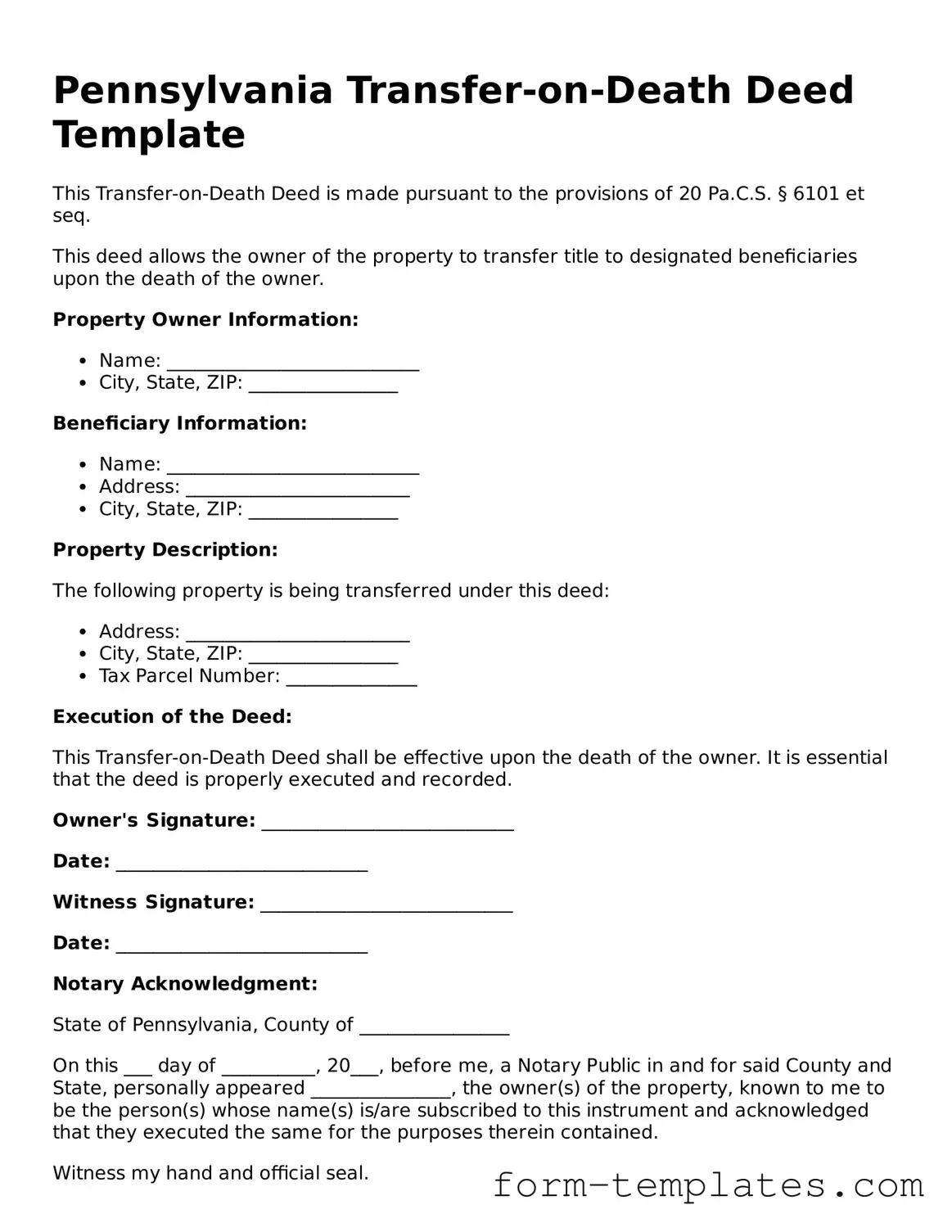Pennsylvania Transfer-on-Death Deed Template
This Transfer-on-Death Deed is made pursuant to the provisions of 20 Pa.C.S. § 6101 et seq.
This deed allows the owner of the property to transfer title to designated beneficiaries upon the death of the owner.
Property Owner Information:
- Name: ___________________________
- City, State, ZIP: ________________
Beneficiary Information:
- Name: ___________________________
- Address: ________________________
- City, State, ZIP: ________________
Property Description:
The following property is being transferred under this deed:
- Address: ________________________
- City, State, ZIP: ________________
- Tax Parcel Number: ______________
Execution of the Deed:
This Transfer-on-Death Deed shall be effective upon the death of the owner. It is essential that the deed is properly executed and recorded.
Owner's Signature: ___________________________
Date: ___________________________
Witness Signature: ___________________________
Date: ___________________________
Notary Acknowledgment:
State of Pennsylvania, County of ________________
On this ___ day of __________, 20___, before me, a Notary Public in and for said County and State, personally appeared _______________, the owner(s) of the property, known to me to be the person(s) whose name(s) is/are subscribed to this instrument and acknowledged that they executed the same for the purposes therein contained.
Witness my hand and official seal.
Notary Public Signature: ___________________________
My Commission Expires: ___________________________
